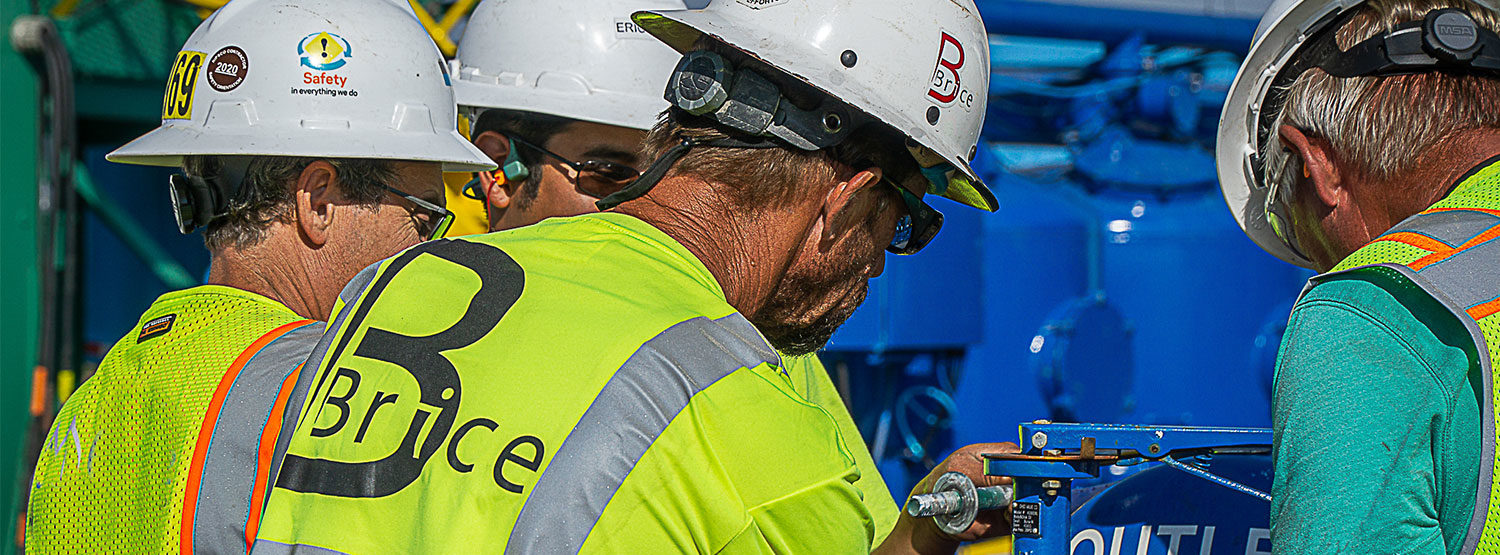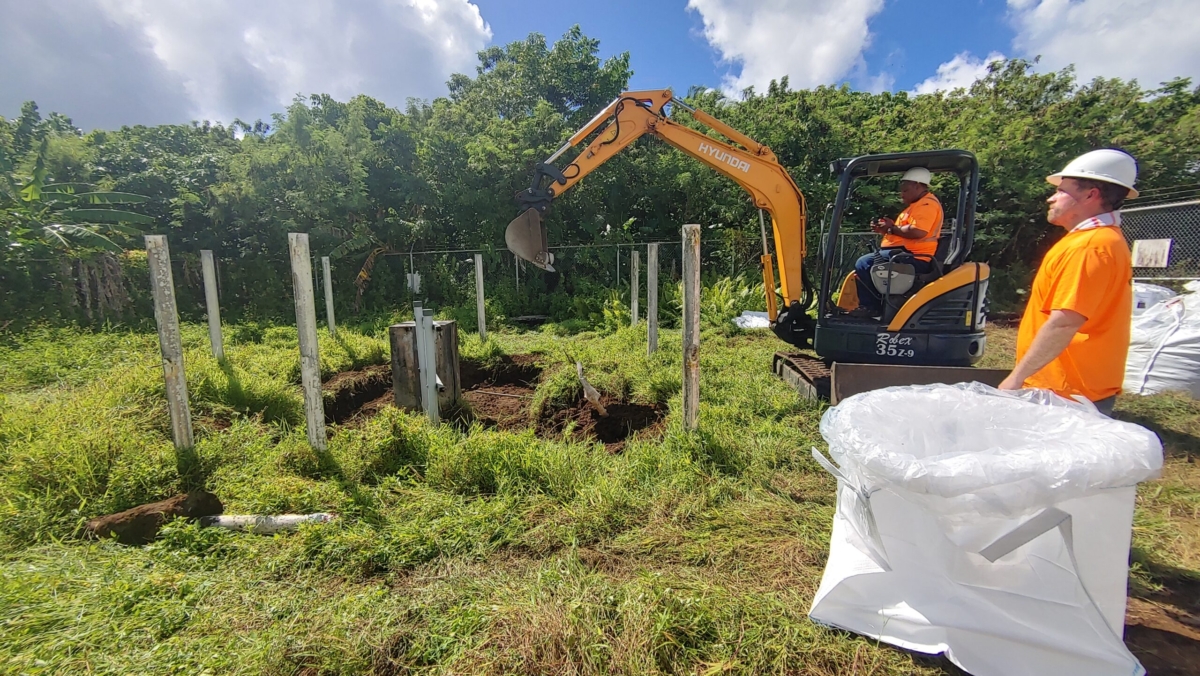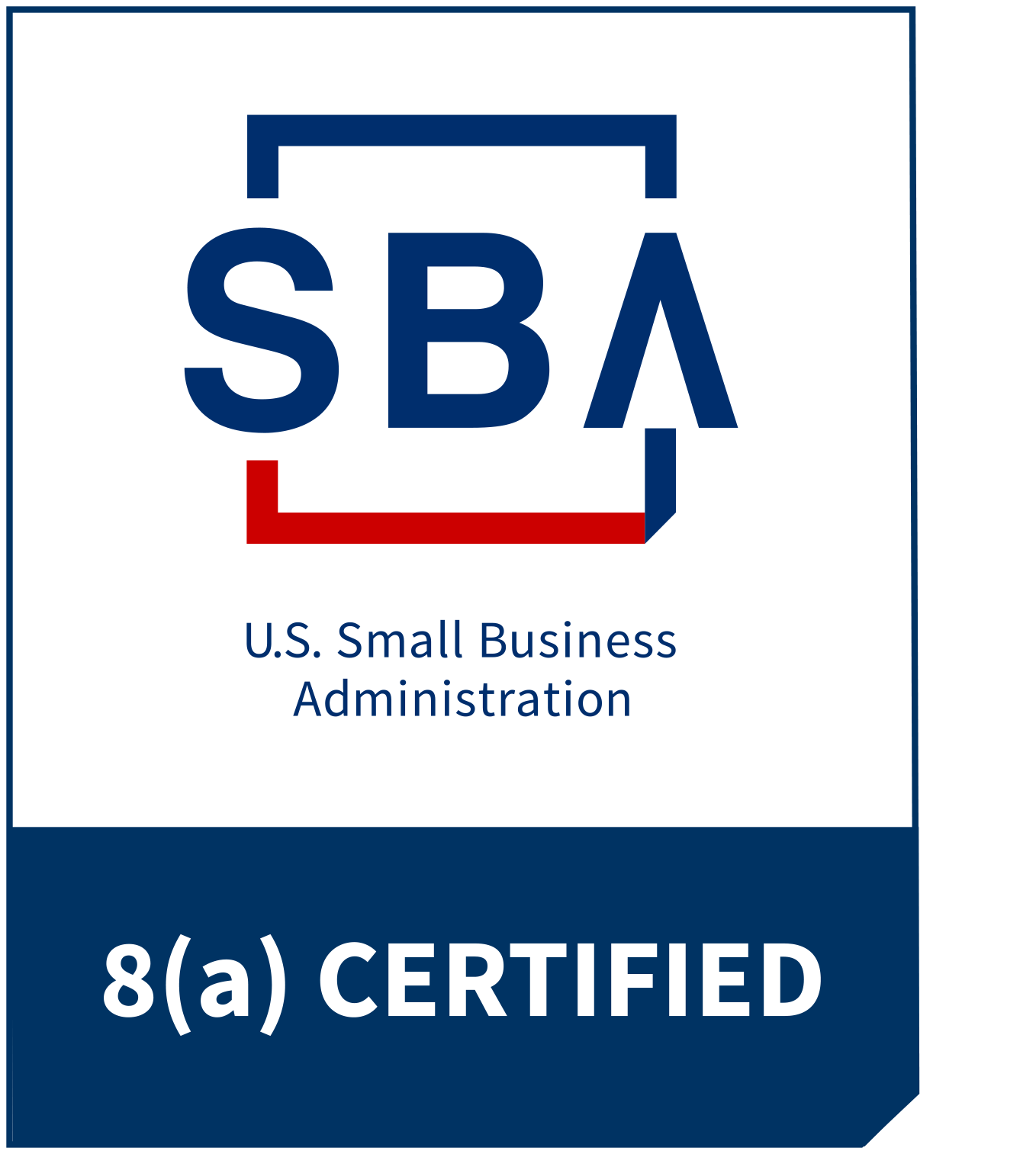Client: Federal Aviation Administration
Location: Vaitogi and Olotele, American Samoa
Completion Year: 2023
Scope of Work:
- Infrastructure removal
- Remedial Action
- Remedial Investigation
Brice performed infrastructure removal, remedial action, and a remedial investigation at two primary areas of concern in American Samoa. The primary focus of the RA at the former FAA NDB was to excavate lead- and polychlorinated biphenyl (PCB)-contaminated soil from three areas of concern and to encapsulate the NDB Building and infrastructure to prevent flaking and chipping of the lead and PCB paints on the outside of the building. The primary focus of the RI at the former FAA RTR was to remove and decommission an aboveground storage tank and to excavate a test pit underneath the AST to determine if fuel contamination exists in the subsurface soil beneath the AST.
Project planning required extensive coordination with vendors, subcontractors, and local government stakeholders to mobilize people, equipment, and materials to American Samoa. WE assigned a key staff member who is a native of American Samoa to assist with the regulatory and permitting aspects of the project and acted as a cultural liaison. Before performing field activities, we coordinated permits and notifications with the FAA. We notified the FAA COR 15 days prior to commencing field activities, and no outages were anticipated for the project.
Brice encapsulated lead and PCB painted structures at the LOG NDB. Prior to encapsulation, all surfaces were scraped and cleaned of loose paint chips, oil, grease, mold, mildew, rust, and dust to ensure proper adhesion of the encapsulant. A 6-mil reinforced liner was placed underneath all surfaces prior to scraping and cleaning to prevent the spread of lead and PCB paint chips. After scraping and cleaning concluded, the liner and captured paint chips were placed in a supersack for characterization and disposal with lead- and PCB-contaminated soils. Brice used a specifically formulated lead-based paint encapsulant appropriate for the American Samoa climate on all painted structures at the LOG NDB site.
At the LOG NDB site we identified three primary excavation areas: two tower base areas and the NDB Building perimeter. In total, we removed 42 cubic yards (CY) of soil contaminated with lead and PCBs from these excavations. Throughout these excavations, we employed X-ray fluorescence (XRF) screening to guide our work. We collected base and sidewall confirmation samples from all three excavation areas and had them analyzed for lead and PCBs.
For the former FAA RTR site, we performed a remedial investigation that included the decommissioning and removal of the above-ground storage tank (AST), along with all associated components such as piping, stairs, support structures, and the concrete slab base. The concrete slab was carefully broken up, removed, and transported to the local landfill. The AST and related piping were transported to the FAA System Support Center (SSC) yard for future reuse.
As part of our investigation, we collected eight primary soil samples from beneath the AST, including five from directly beneath the AST pad and five from a test pit dug to 6.5 feet bgs at the AST location. These soil samples were analyzed for various organic compounds, including gasoline range organics (GRO), diesel range organics (DRO), residual range organics (RRO), volatile organic compounds (VOCs), and semi-volatile organic compounds (SVOCs). Due to the significant presence of organic materials at the site, we conducted analyses both with and without a silica gel cleanup procedure to evaluate biogenic interference. Furthermore, we collected ten primary soil samples from downgradient of the former AST location, outside of the QOL RTR fence line.
Samples were properly packaged, labeled, and shipped to a laboratory in Sacramento, CA, who received, repackaged, and shipped them to Lebanon, TN for analysis. Excavated soils were packaged in 1 cubic yard (cy) supersacks and containerized prior to barging to Seattle, where they were then transported to a landfill in Arlington, Oregon for disposal.



 As an ANC 8(a) firm, Brice Solutions is eligible to receive sole source contracts regardless of dollar size, with no upper limit, compared with traditional 8(a) enterprises which are held to a sole source contract limit of $4 million.
As an ANC 8(a) firm, Brice Solutions is eligible to receive sole source contracts regardless of dollar size, with no upper limit, compared with traditional 8(a) enterprises which are held to a sole source contract limit of $4 million.